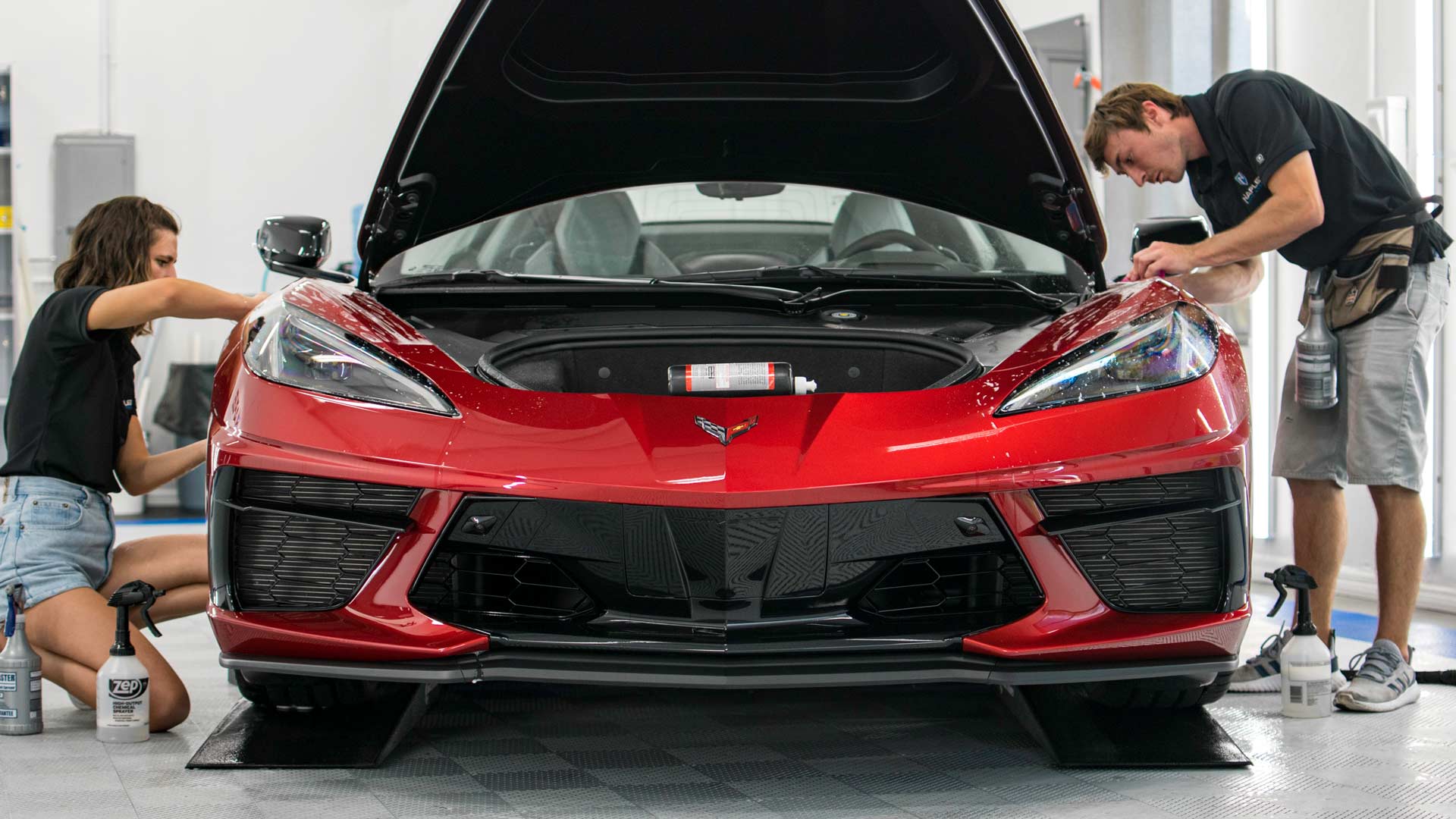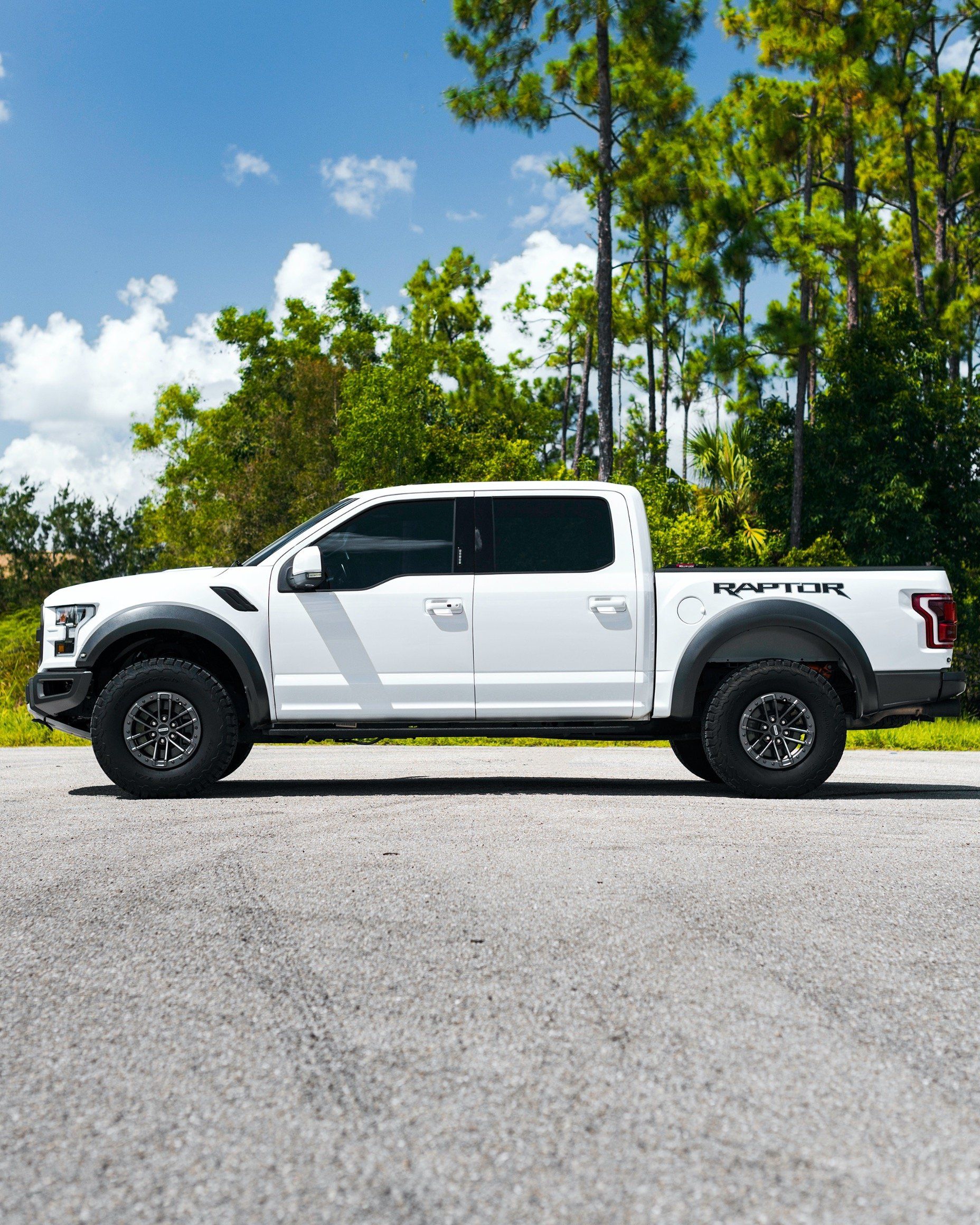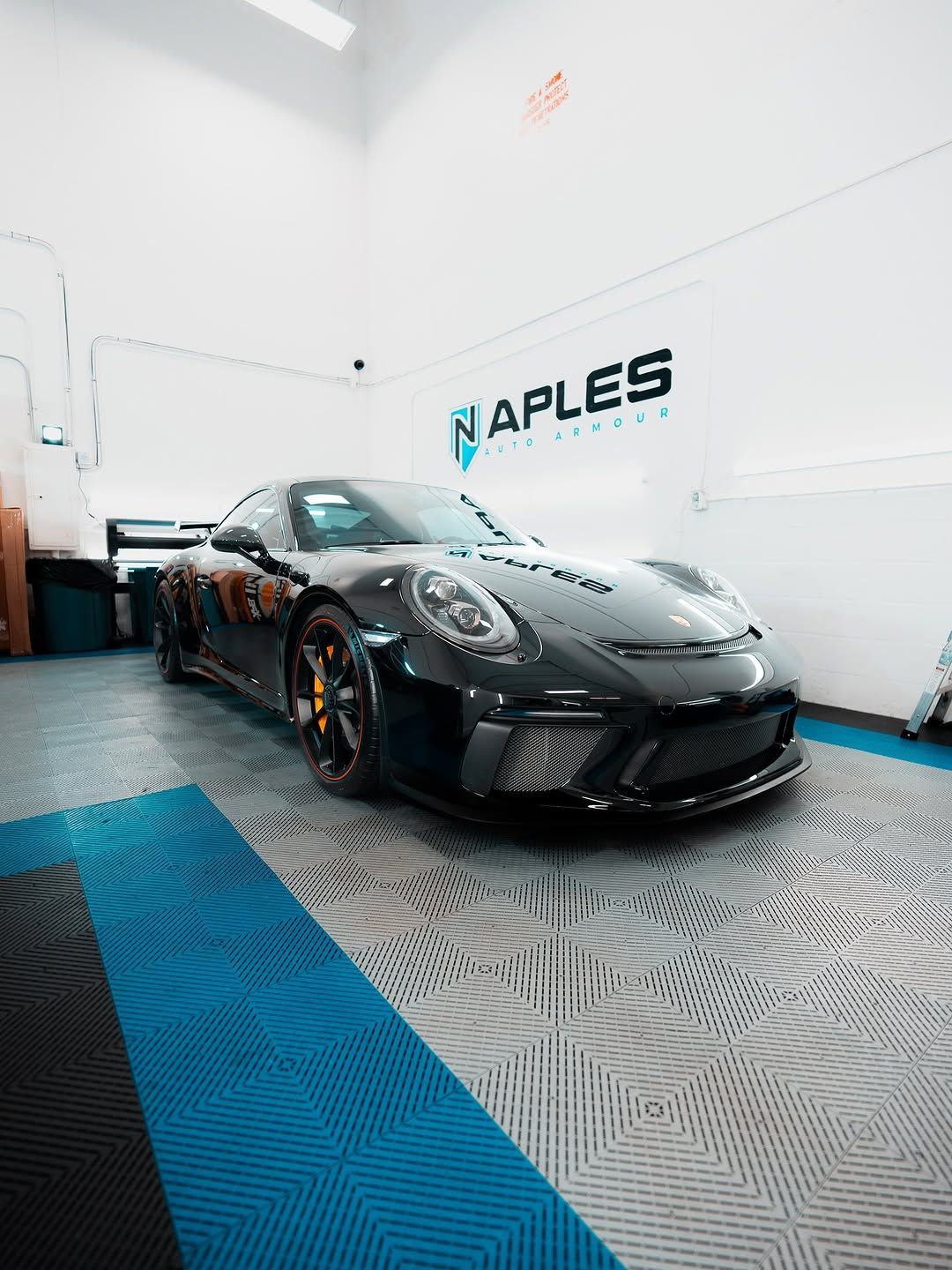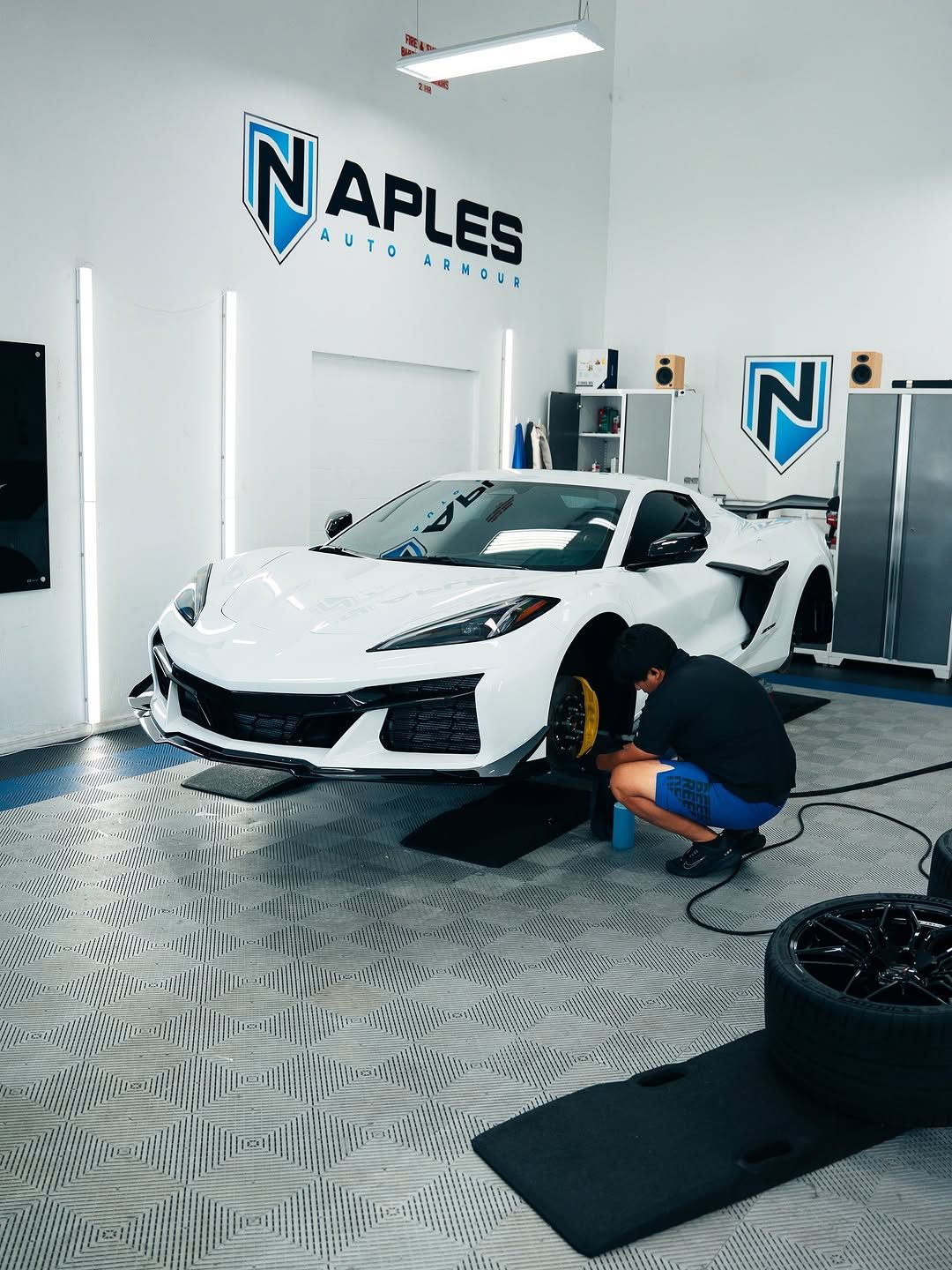PPF vs. Ceramic Coating: Which One Is Right for You?
When it comes to protecting your car, you're likely faced with a big decision: should you go with Paint Protection Film (PPF) or Ceramic Coating? Both options promise to keep your vehicle looking sharp and shielded from the elements, but they don’t necessarily serve the same purpose. If you’ve ever parked under a tree and found bird droppings on your hood or taken a long trip only to discover chips in your paint from road debris, you know the struggle of trying to maintain a flawless finish. At first glance, PPF and Ceramic Coating might seem interchangeable, but understanding their unique benefits is key to making the right choice for your ride.
The key differences between
PPF and
Ceramic Coating include their thickness, level of protection, and application areas; PPF offers superior protection against chips and scratches due to its thickness, while Ceramic Coating enhances shine and makes cleaning easier. To choose the right one, consider factors like your driving habits, vehicle usage, and whether you prioritize impact resistance or ease of maintenance—many car owners opt for a combination of both for optimal protection.
Comparing Protection Levels of PPF and Ceramic Coatings
PPF, or Paint Protection Film, has gained significant recognition for its robust physical safeguards. This thick layer, often referred to as "Clear Bra," can absorb impacts that would otherwise chip or scratch your car's paint, particularly in high-impact areas like the front bumper or hood. This makes it an ideal choice for drivers in regions with lots of gravel roads or during seasons when road debris is prevalent. With an average thickness of about 8 mils, PPF effectively resists damage, making it especially favorable for vehicles that experience harsh conditions regularly.
However, while PPF shines in protecting against physical damage, it doesn’t offer the same level of chemical resistance that you would find with ceramic coatings. It's crucial to understand this distinction when making your decision.
Conversely, ceramic coatings offer a distinct level of protection. They excel at guarding against chemical threats from substances like bird droppings, tree sap, and harmful UV rays, which can degrade your paint over time. The beauty of ceramic coatings lies in their hydrophobic properties—they create an ultra-smooth surface using advanced nanotechnology that makes water bead up and slide right off. This enhances the vehicle's appearance and means your car stays cleaner for longer periods due to reduced grime accumulation.
Moreover, users report that ceramic coatings require less maintenance compared to traditional waxes. A survey indicated that 75% of users prefer ceramic coatings for daily-driven city vehicles due to their ease of upkeep. Imagine driving around without worrying about constant washing! Just a simple rinse and wipe typically keeps them looking immaculate.
Understanding these differences guides your selection based on your vehicle's typical threats. If you frequently park near trees or live in an area with high precipitation and contaminants in the air, ceramic coatings are more beneficial because they can preserve the aesthetic quality of your vehicle while providing effective protection against harsh environmental conditions. Conversely, if your vehicle endures wear from construction sites or unpaved roads frequently, applying PPF may be wiser to prevent physical damage.
As you evaluate these options for optimal protection, consider how they affect the appearance and finish of your car as well. The characteristics of each protective layer can significantly influence not just durability but also visual appeal.
Differences in Appearance and Finish
When considering Paint Protection Film (PPF) versus Ceramic Coating, it's essential to note their unique characteristics that contribute to your vehicle's aesthetic. PPF stands out as a clear film, designed to be nearly invisible while effectively preserving the car's original appearance. Whether you opt for a glossy or matte finish, modern PPF technologies cater to various preferences, ensuring you maintain your vehicle's style. A remarkable feature of many contemporary PPFs is their self-healing capability: minor scratches can disappear when exposed to heat, keeping your car looking fresh and damage-free.
This self-healing property is not just a gimmick; it creates a practical solution for everyday wear and tear, thereby enhancing the longevity of your vehicle's aesthetics.
On the other hand, Ceramic Coatings are celebrated for providing an intense gloss that can truly transform your car's exterior. When meticulously applied, these coatings enhance the paint's depth and clarity, creating a lustrous finish that seems almost reflective, like looking into a polished surface of glass. Many users report that their vehicles look significantly more vibrant and captivating after receiving a ceramic coating. However, while this liquid polymer enhances the surface tremendously, it does have limitations: it cannot conceal existing imperfections in the paint. Thus, if there are pre-existing scratches or chips before application, they will still be visible despite the newfound brilliance.
Furthermore, from a maintenance standpoint, both options offer distinct advantages depending on your aesthetic goals. With PPF’s durability against physical damage like rock chips and its ability to sustain its appearance through minor abrasions, you can feel confident about taking long drives without anxiety over potential scratches. In contrast, while Ceramic Coating offers hydrophobic properties that make cleaning easier, allowing water and dirt to bead off, users must commit to regular upkeep to ensure that this protective layer remains effective and that the gloss continues to shine brightly.
Understanding these differences in appearance enables you to make an informed decision tailored to your specific needs as we explore additional factors integral to maintaining your vehicle's appeal and performance.
Longevity and Durability
When contemplating vehicle protection, longevity and durability become pivotal factors. Paint Protection Film (PPF) generally boasts an impressive lifespan of approximately 5 to 10 years. This lifespan can be influenced by various elements such as exposure to harsh weather conditions—think relentless UV rays or intense hailstorms—and regular maintenance practices. Moreover, reputable brands often back their high-quality films with warranties that not only reflect their confidence in durability but also a promise of performance over the years.
However, it’s important to mention that while PPF holds up remarkably well against physical damage, it isn’t immune to yellowing with extended sun exposure. Over time, this visual degradation can detract from the aesthetic appeal of your vehicle, although it won't impair the protective qualities.
Conversely, Ceramic Coatings, with their unique longevity, typically last between 2 to 5 years, with some premium applications achieving a lifespan of up to 7 years under ideal conditions. The catch here is that Ceramic Coatings excel in providing unparalleled chemical resistance and gloss but may wear out more quickly on vehicles experiencing heavy use or extreme environments.

Maintenance Needs
Both Paint Protection Film (PPF) and Ceramic Coating demand specific care routines to ensure they perform optimally over time. Taking the time for routine maintenance maintains your car's aesthetic appeal and extends the life of the protective layer.
For PPF, maintenance is relatively straightforward. Regular washing is key—avoid harsh chemicals and abrasive brushes, as these can degrade the film’s quality. This gentle approach preserves its protective features while ensuring your paint remains shielded from scratches and chips.
A fascinating aspect of PPF is its self-healing properties: minor scratches will disappear when exposed to heat. You can harness this benefit by parking your car in direct sunlight or using a warm, damp cloth to gently apply heat to the affected area. It’s like magic! Just ensure you are attentive during the washing process; dirt buildup can lead to issues over time if neglected.
Ceramic Coatings simplify cleaning by enhancing the paint's hydrophobic properties, but they still need consistent upkeep to maintain their effectiveness. A simple rinse may not suffice; regular washes with appropriate products are crucial to preventing contaminants from bonding with the coating. Without this care, the hydrophobic effect may diminish over time.
Spraying a specialized maintenance product every few months provides assurance that you’ll keep that effortless “just waxed” look. If you want to prevent mud from setting in or grime from bonding, a little diligence is crucial.
Establishing an easy-to-follow maintenance schedule is beneficial regardless of which protection method you choose. Moreover, using compatible cleaning products tailored for either PPF or ceramic coatings ensures long-lasting results without compromising their effectiveness. Regular maintenance isn't just beneficial; it's necessary for preserving your vehicle's exterior beauty and value.
Your investment in maintaining these protective measures ensures your car stays looking fresh for years to come.
Now that we know how to care for these coatings, we can look at the costs and financial factors involved in choosing between them.
Cost Factors
When weighing the financial implications of paint protection film (PPF) versus ceramic coating, it's essential to understand how various elements affect pricing. While both options offer protection, they come with different price tags and benefits.
For PPF, you might find yourself facing costs ranging from $2,000 to $7,000 or even higher if opting for extensive coverage on large vehicles or using premium films. This pricing reflects not just the materials but also the professional installation expertise required to ensure proper application.
If you're someone who frequently drives in high-risk environments—like construction zones or areas with inclement weather—the investment in PPF might save you money in the long run by preventing scratches and dings.
In contrast, ceramic coating usually costs between $500 to $2,000, depending on factors such as vehicle size and the complexity of the application. This option provides excellent chemical protection against environmental contaminants and enhances ease of cleaning due to its hydrophobic properties. Therefore, while it's more budget-friendly upfront compared to PPF, ceramic coatings don’t offer the same level of defense against impacts like excessive rock chips or deep scratches.
Choosing between these two products involves more than just looking at the sticker price. Factors like vehicle size and existing paint condition can significantly influence costs too.
For instance, a larger SUV may require more material and longer labor hours for installation, pushing the price up further. Similarly, if your vehicle has existing imperfections like scratches or swirl marks, additional paint correction services may be necessary before applying either coating.
Additionally, some coatings offer different durability levels; a two-year option may be cheaper than a five-year one, yet investing a bit more can yield longer-lasting results and ultimately save you money over time through less frequent reapplied maintenance.
Don't forget to factor in who performs the installation—experienced professionals might charge higher rates but are also likely to provide better results. Investing wisely in quality installation can prevent future issues that may cost you even more down the line.
Understanding these financial considerations is pivotal as we shift our focus toward making an informed choice that best suits your car’s specific requirements.
Choosing the Best Option for Your Car
Choosing the appropriate protective solution for your vehicle is not a universal choice; it depends on your driving style and location, as well as your personal preferences for maintenance and aesthetics.
If you enjoy taking scenic routes through rugged terrain or frequently traverse busy highways, Paint Protection Film (PPF) could be your ideal choice. PPF offers a robust defense against rocks, road debris, and scratches that can tarnish your car's pristine finish. Its durable Thermoplastic Polyurethane (TPU) material excels in safeguarding your investment, helping maintain that brand-new look longer.
If keeping a flawless, glossy shine with low-maintenance requirements is your primary concern, then Ceramic Coating could be more appealing. This highly hydrophobic finish repels water, dirt, and grime, making regular cleaning less of a chore. Additionally, the coating’s self-cleaning properties mean that a simple rain shower can work to keep your car looking fresh.
A common misconception among car owners is that they need to choose one or the other. In reality, the most effective solution may lie in combining both methodologies.
Think of a hybrid approach where PPF is applied to those high-impact areas—like the front bumper and hood—while Ceramic Coating covers the rest of your vehicle. This strategy creates a formidable fortress around your car's exterior while also ensuring an aesthetically pleasing finish across all surfaces. By doing so, you benefit from comprehensive protection and aesthetic improvement.
Many satisfied clients at Naples Auto Armour have shared their success stories regarding this dual-application strategy, noting how it has transformed their vehicles into eye-catching showpieces without sacrificing protection. The combination allows them to enjoy driving without the constant worry of blemishes marring their investment.
For personalized guidance tailored to your specific driving habits and preferences, feel free to connect with our team at Naples Auto Armour. We're here to help you find the perfect balance between appearance and protection for your beloved vehicle.
To experience top-notch protection for your car, don't hesitate to reach out and explore your options today! Call us at 239-378-2336 for more information!

